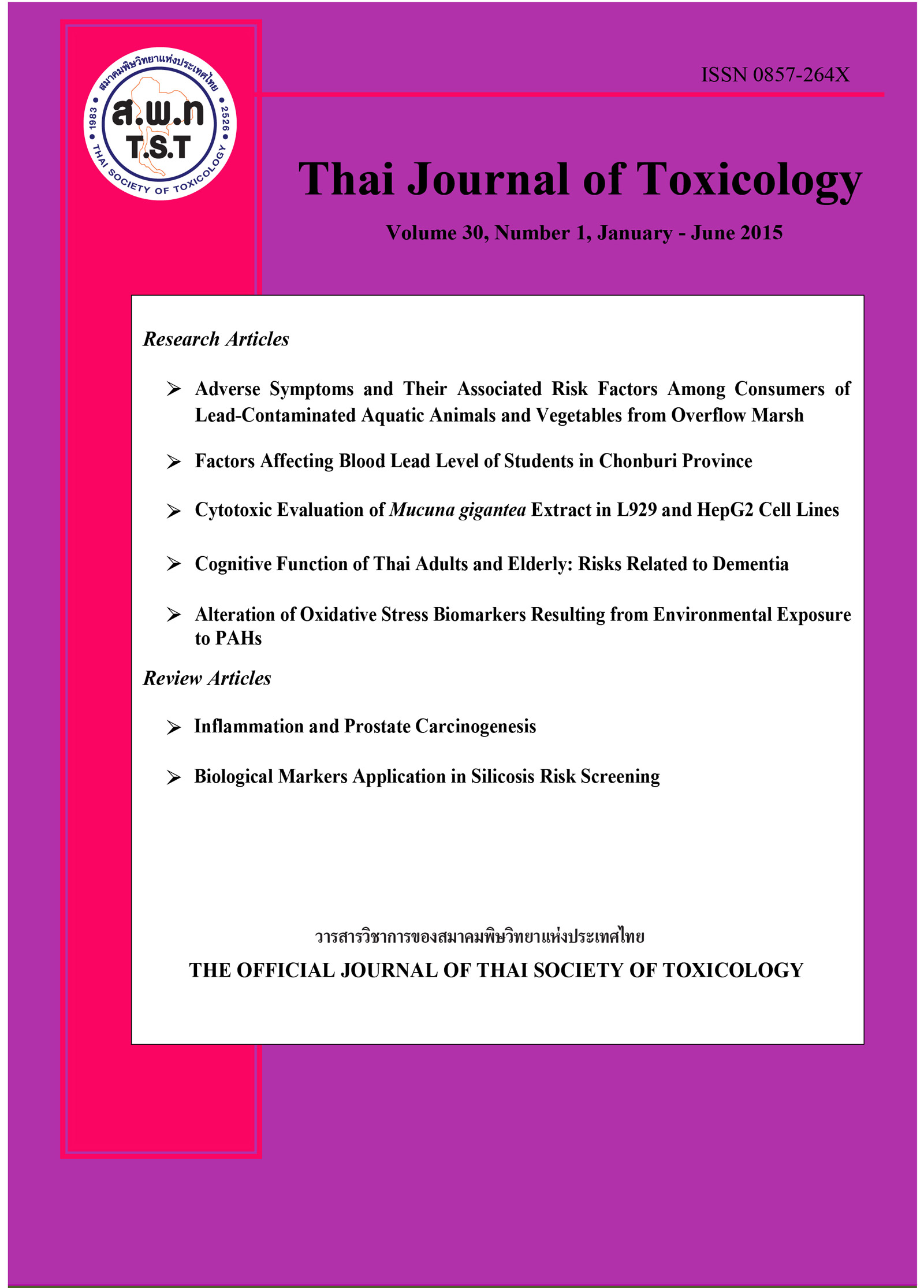Alteration of Oxidative Stress Biomarkers Resulting from Environmental Exposure to PAHs
Main Article Content
Abstract
The aim of this work was to investigate the effect of environmental polycyclic aromatic hydrocarbons (PAH) exposure on biomarkers related to antioxidant function and oxidative stress. The lipid peroxidation (as malondialdehyde, MDA), activities of superoxide dismutase (SOD), catalase (CAT), glutathione peroxidase (GPx) as well as levels of glutathione, vitamin E and C were investigated in 100 male bus drivers and 100 normal controls. Urinary 1-hydroxypyrene (1-OHP) was measured as biomarker of PAH exposure in both groups. The means of 1-OHP in controls and bus drivers were 0.032 and 0.132 μmol/mol Cr, respectively (p < 0.001). MDA level in bus drivers (2.052 μM) was statistically higher than in the control subjects (1.219 μM, p < 0.001). Important findings were the significant increases in the activities of SOD and catalase in bus drivers when compared to control (2,330.15 vs 1,527.85 U/gHb and 42,496 vs 36,239 U/gHb, respectively). The concentration of GSH, vitamin C and vitamin E significantly increased compared to the control group. These results suggested that environmental exposure to PAHs was associated with oxidative stress. These also supported the importance of biomarker evaluation related to possible health risks as described in this study. Additional studies with biomarkers of PAHs effect and susceptibility are necessary for better understanding and health prevention.

